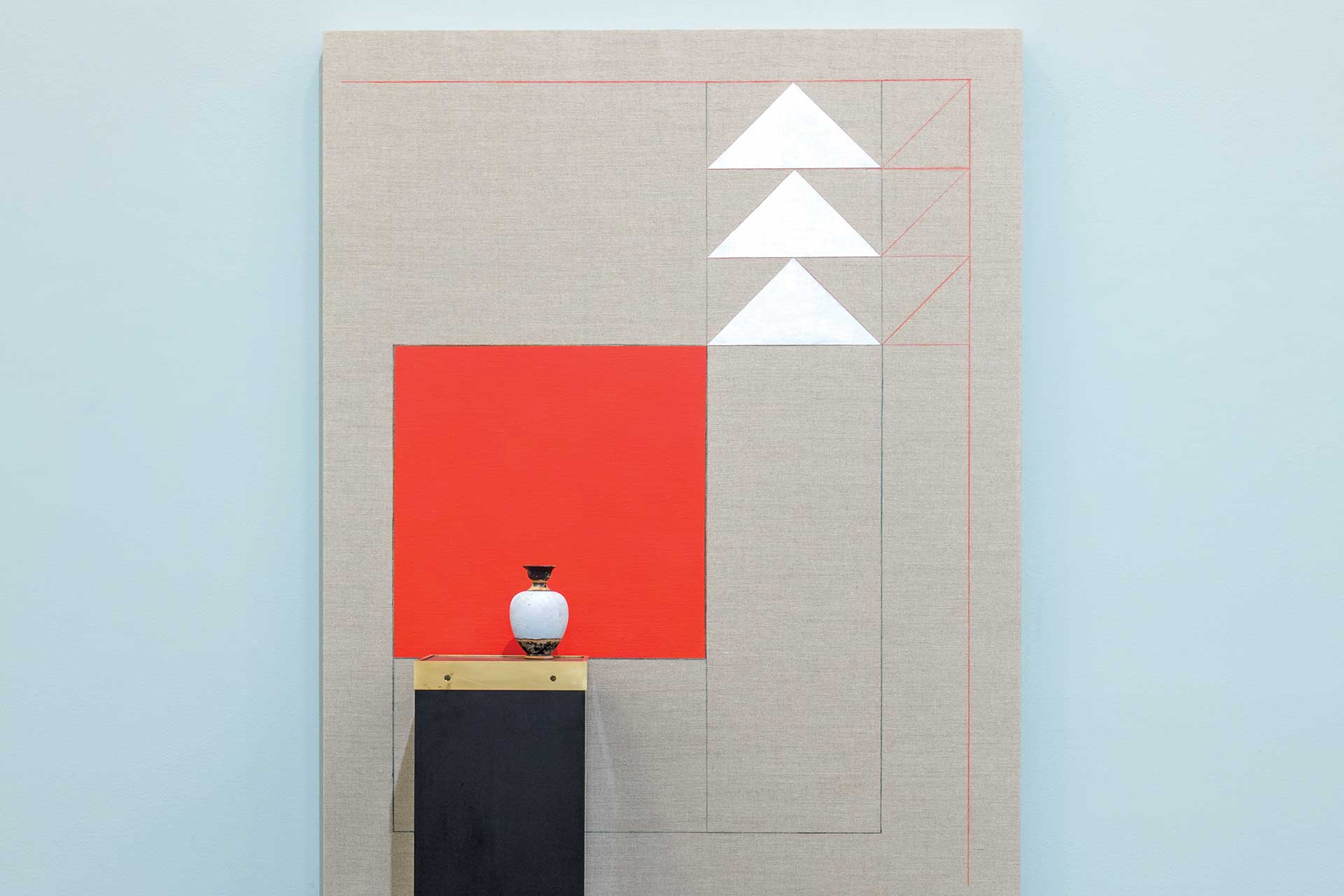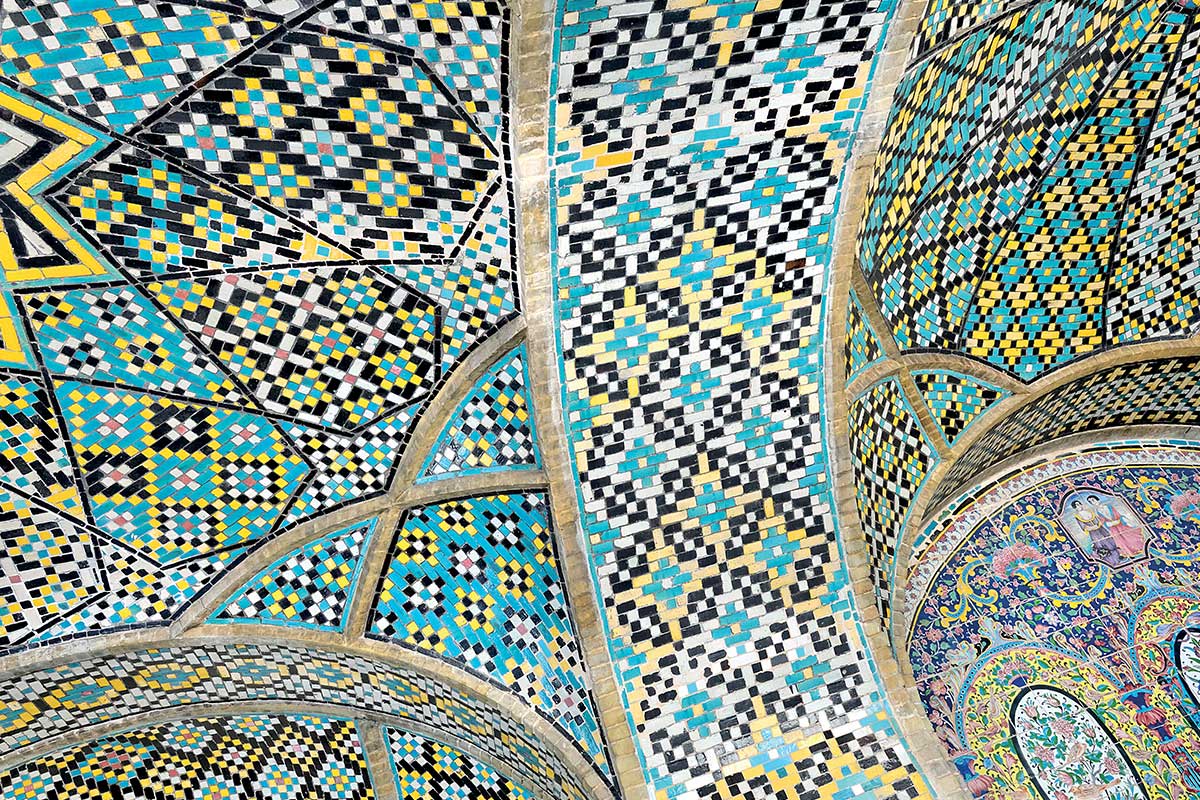The decline of the ideological factions and installation of a metamodern consumer hedonism has even managed to take hold in the Persia of legends
US-Iran Relations and Symbolic Images of Iranian Culture
The anti-Iranian stances expressed by the US president and the sanctions linked to development of its missile arsenal, to its nuclear program and support given to fundamentalist groups such as Hezbollah. Echoes of a cold war that takes us back to the era of fiercest conflict between America and the newly created Islamic Republic, which culminated in 1979 with occupation of the United States Embassy by extremist student factions who took fifty-two US diplomats hostage. In the end, relationships with the West improved, after the declaration by the moderate Has san Rouhani, with the support of the reformists, that marked the start of receptiveness for dialogue on the nuclear agreement.
Symbolic images are back: Stars and Stripes in flames, national ist fanaticism, thick Shia Imam beards, slogans and prophetic diktats of the Ayatollah Khomeini. A whirlwind of black tunics, photographed for the Magnum Agency by Abbas Attar, an Iranian photographer who grew up in Algeria. Abbas went back to Iran in 1977, when the country was suspended between backwardness and the urge for modernization, between the poverty of the masses and the ceremonial wealth of the court of the Shah. Pomp testified to the splendors of Golestan and the jewels and crowns with white aigrette made by Cartier and van Cleef for the Pahlavi, the last to sit on the Peacock Throne, today on display in the National Museum of Iran. Pendants, bracelets, brooches, necklaces—looking like Ottoman sweetmeats or dazzling curtain raiser costume jewelry.
The Contradictions and Yearnings of Modern Iran
An Iran split between the laicity of the lights of its capital, epicenter of the north at the foot of the Al borz, immersed in a metaphysical light and cloaked in an unbelievable fog of pollution. The satirical cartoon Persepolis, 2008 by Vincent Paronnaud and Marjane Satrapi: in a contradictory mosaic that still today characterizes what was the Persian empire, antagonist, at least a couple of thousand years ago, of Hellas and the entire western alliance. A modernist fire seems, today more so than ever, to be hiding under the ashes, in that land floating on oil. There is a yearning for the West and information dribbles through erratically, so that is how we report it.
The young generation is said to have pretty much deserted the mosques, and among said youngsters unemployment apparently stands at about thirty percent. The brain drain is increasing, when not hindered by the difficulty of getting a visa for dreamt of destinations such as America or Germany. No beggars begging, no homeless sleeping rough. A fading memory is all that remains of the youth of the Green Movement that was bloodily quashed in 2009, after breaking out as a consequence of the reelection of the ultra-reactionary Ahmadinejad as President of the Republic. The decline of the ideological factions and installation of a metamodern consumer hedonism has even managed to take hold in the Persia of legends. «The new religion is called money, a luxury lifestyle is the real credo» whispers an expat who moved to London years ago, «especially for the privileged and nouveau riche, some incredibly wealthy, who belong to the new caste of power». In the case of fashion, for instance, with only a limited, prudish selection of on trend fashion available even in the largest cities, the scions of the jeunesse dorée travel to Dubai to shop.
Iran: A Country Split Between Tradition and Modernity
A few months ago, police raided a party being held in a private home in Tehran, where three hundred people were dancing techno, displaying more than liberal sexual behavior and getting high on a variety of drugs. The agents made each of the partygoers leave, asking for their details and theatrically handcuffing the host, accused of violating the morals and laws of the Koran. «It was nothing more than a farce that I have seen repeated frequently. The reckless host was freed immediately thanks to a generous ‘donation’ to the police force that he had ready».
The country is split in two, plagued by hyperinflation that has turned the rial into waste paper compared to the euro and dollar, especially in the backward suburban areas far from big cities such as Isfahān, Mashhad, Qom, Shiraz or Tabriz. There are those who mourn the decline of the modernist urges and the land of plenty—in actual fact those with plenty were few and far between—that was the golden age of Shah Mohammad Reza Pahlavi, idealized like an opulent Hollywood fiction series with a middle eastern slant and seen as a lost paradise. The future is uncertain, but the austerity that we have known for decades is starting to show cracks. CocaCola can be found everywhere, as can Nutella. The unknown factor today is the reawakening of American hostilities, stressing an already tense situation and perhaps marking a decisive step backwards in the ongoing, timid process of westernisation.
The Paradoxes of Modernity and Tradition in Tehran
There are strident incongruencies, true paradoxes that border on folly—the violent nonacceptance of homosexuals. If you present yourself at a police station with painted nails, drag queen makeup and pink or blue hair after being called up for military service—an obligation that takes two years out of your life—and declare your homosexuality, you set in motion an ordeal that also includes a rectal examination. Completely mad and difficult to understand—if you want to change gender, the law does not stop you and even provides free medical care. According to Islamic code, it is enough for five people to declare that they have seen two men or two women having sexual intercourse for the accused to be stoned to death without any sort of trial.
The temperature of the young metropolitan milieu and the anxiety of all that is new can be measured on the Instagram account of The Tehran Times, which tells of a contemporaneity that is all about design, rediscovery of an autochthonous gastronomic and fashion tradition, thanks to talents such as the handmade fashion designer Maryam Madhavi, in business since 1981 and Reza Nadimi, born in 1980. There is even a Tehran Fashion Week. Every Friday evening the capital is studded with exhibition openings at art galleries, a series of mobile alcohol free parties. Nobody wants to end up in jail because of a beer. So, ostentation of public virtues, composure and straightlaced behavior in the many coffee shops, large and small, exclusively alcohol free, luxurious or intellectually inclined, the meeting places for the young generations. The state required black manteau for girls can be turned into a means of seduction. As can the veil, replaced by designer headscarves. Lots of surgically upturned noses, incongruous on those sculpted faces, with their slanting, sooty eyes like miniature Qajar princesses, despite the many manifestos condemning the female nude.
Exploring Iranian Culture: Contradictions, Creativity, and Contemporary Art
Golshifteh Farahani, actress and singer songwriter who left Iran for France, was nominated for a César Award and directed by Ridley Scott, is proactive in the issue of the condition of women in her country. The film, video and photography artist Shirin Neshat has taken a strong and never stereotypical stance on the position of female Muslim identity. She is famous for her Women Without Men, film that won the Silver Lion for Best Direction at the 66th Venice Film Festival in 2009.
Another western Iranian, Asghar Faradi, opened the latest Cannes festival with his film Everybody Knows, giving his stars, top Spanish duo Penelope Cruz and Javier Bardem the chance to uphold the cause of Jafar Panahi, Iran’s most important contemporary filmmaker. The resounding protest made by Asghar Panahi, Jafar’s brother in the middle of all the bling bling of the festival hit the news. An Oscar winner, screenwriter and actor, three years ago he won the Golden Bear in Berlin for Taxi Tehran, after training up as assistant to Abbas Kiarostami and as the greatest exponent of the so called ‘Iranian New Wave’.
Iranian filmmaker Jafar Panahi prevented from attending Cannes Film Festival
Government authorities prevented Jafar Panahi from leaving Iran to reach the red carpet in Cannes, where his heart wrenching all female on the road film Three Faces was in competition at the seventy first edition of the film festival. Panahi has been sentenced and arrested various times for presumed propaganda activity against the local government and is also banned for twenty years from directing any film, screenwriting, giving interviews or leaving Iran if not for medical treatment or to fulfil his Hajj pilgrimage duty. Born in 1960, the heretic and poetically subversive Panahi, made his film clandestinely, without any permission to do so, on a set in the middle of nowhere almost on the Turkish border, where they don’t even speak fārsiī, the Iranian language with its seductive accent. It is a mystery how he managed to finish filming.
The Shah, Farah Diba, and the Tehran Museum of Contemporary Art.
A few years ago, at a Fondation Pinault party in Venice during the opening days of the Biennale, some Iranian youths were moved to meet Farah Diba, greeting her with a deep bow. Farah Diba is the Shahbanou born of a high-class bourgeoisie family of educated, cosmopolitan functionaries, former empress and third wife to the Shah. He is remembered for his dazzling coronation on 26 October 1967 and later for his exile from the country on 16 January 1979, impeccable as he fled, in his Valentino camel coat with its fur collar.
His desire to modernize his country is still today evident in the TMoCa, the Tehran Museum of Contemporary Art, which was created on a whim of his. The museum was conceived, designed and set up by one of his cousins, the architect Kamran Diba, and it is home to a collection that goes from the French Impressionists to Rothko and the Minimalists, Giacometti, Bacon and Marino Marini. It was Kamran, devastated by the loss of two of his children in 2001 and 2011, subject of a mysterious iconic video portrait by Bob Wilson, who saved the architectural and artistic heritage of the ancient Isfahān.
The Influential Culture of Iran: From Persia to the World
The Culture of Iran or Culture of Persia is one of the most influential cultures in the world. Iran (Persia) is considered as one of the cradles of civilization, and due to its dominant geo-political position and culture in the world, Iran has heavily influenced cultures and peoples as far away as Italy, Macedonia, and Greece to the West, Russia and Eastern Europe to the North, the Arabian Peninsula to the South, and the Indian subcontinent and East Asia to the East. Iran’s rich history has had a significant impact on the world through art, architecture, poetry, science and technology, medicine, philosophy and engineering.




















